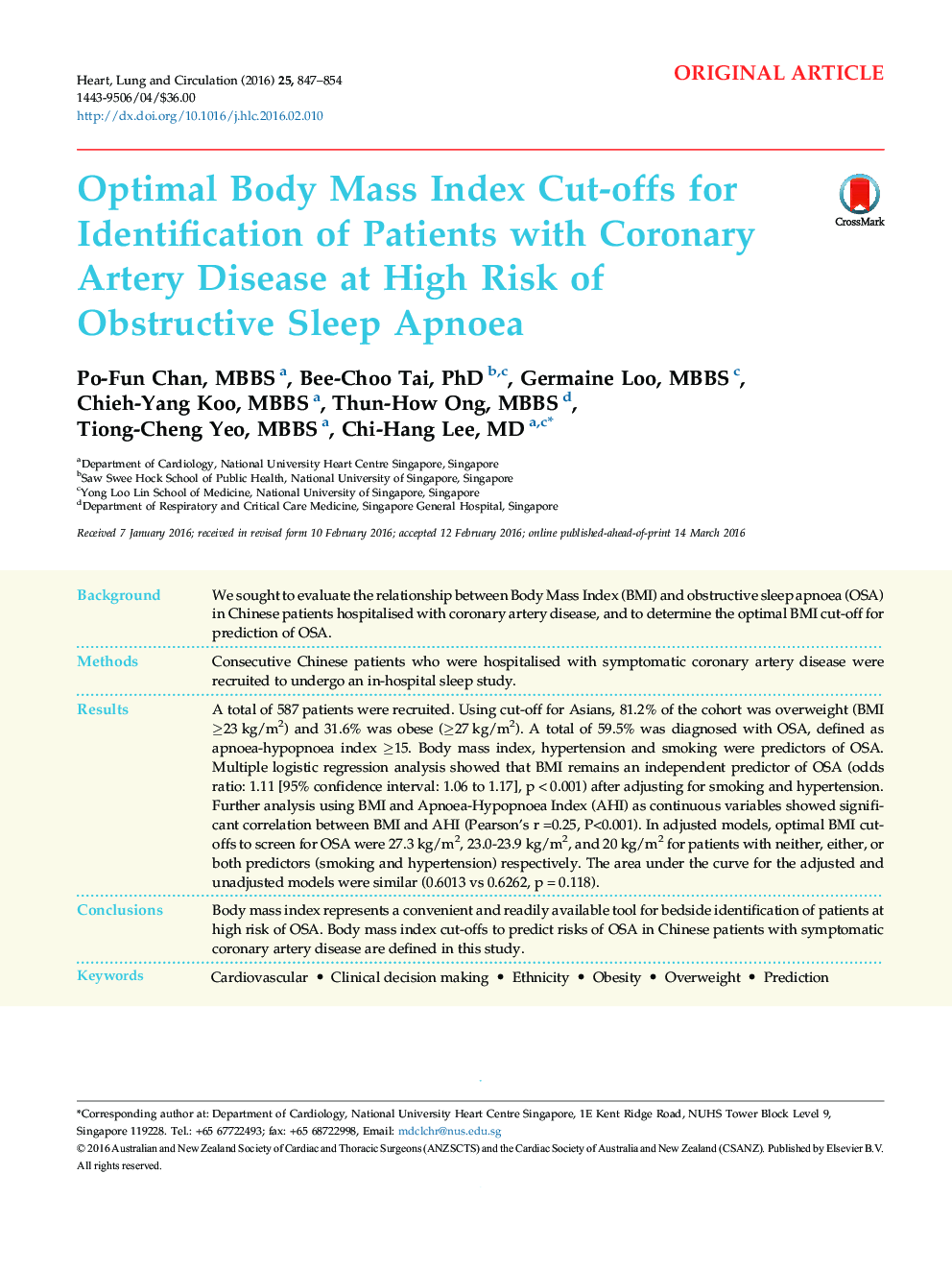| Article ID | Journal | Published Year | Pages | File Type |
|---|---|---|---|---|
| 2916633 | Heart, Lung and Circulation | 2016 | 8 Pages |
BackgroundWe sought to evaluate the relationship between Body Mass Index (BMI) and obstructive sleep apnoea (OSA) in Chinese patients hospitalised with coronary artery disease, and to determine the optimal BMI cut-off for prediction of OSA.MethodsConsecutive Chinese patients who were hospitalised with symptomatic coronary artery disease were recruited to undergo an in-hospital sleep study.ResultsA total of 587 patients were recruited. Using cut-off for Asians, 81.2% of the cohort was overweight (BMI ≥23 kg/m2) and 31.6% was obese (≥27 kg/m2). A total of 59.5% was diagnosed with OSA, defined as apnoea-hypopnoea index ≥15. Body mass index, hypertension and smoking were predictors of OSA. Multiple logistic regression analysis showed that BMI remains an independent predictor of OSA (odds ratio: 1.11 [95% confidence interval: 1.06 to 1.17], p < 0.001) after adjusting for smoking and hypertension. Further analysis using BMI and Apnoea-Hypopnoea Index (AHI) as continuous variables showed significant correlation between BMI and AHI (Pearson's r =0.25, P<0.001). In adjusted models, optimal BMI cut-offs to screen for OSA were 27.3 kg/m2, 23.0-23.9 kg/m2, and 20 kg/m2 for patients with neither, either, or both predictors (smoking and hypertension) respectively. The area under the curve for the adjusted and unadjusted models were similar (0.6013 vs 0.6262, p = 0.118).ConclusionsBody mass index represents a convenient and readily available tool for bedside identification of patients at high risk of OSA. Body mass index cut-offs to predict risks of OSA in Chinese patients with symptomatic coronary artery disease are defined in this study.
